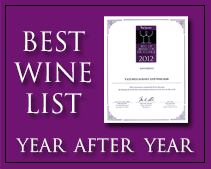Wine Production in Chile
Date: December 16, 2010
About Wines from Chile
Best wine supplier in Philippines discusses wine related topics
Chile underwent a rapid viticultural transformation in the 1990s. There was a large-scale investment from overseas producers that helped this transformation. After a shaky start, when the main concern was to rip out the old “rauli” (mature beech barrels) and replace them with vast stainless steel equipment, people in the wine industry paused to take stock of the situation. They soon realized that to produce outstanding, world-competing wines, more was required. The answer lay in improving the actual quality of the fruit coming into the wineries. Producers needed, literally, to return to their roots. Decades of neglect had left badly tended vines. Concepts, such as vineyard mapping, canopy management and controlled irrigation, were rapidly put into practice. Furthermore, up until recent times, Chilean wine makers had remained firmly entrenched in following traditional French methods of wine production. In the 1990s, however, they started to question and experiment, and from that moment onward, Chile’s wine industry blossomed.
Main Red Grape Varieties
Chile’s thriving wine industry was initially built upon the Cabernet Sauvignon grape although Merlot is now becoming as important. Today, Pinot Noir also is prominent.
Cabernet Sauvignon
The distinctive black currant flavor of the Cabernet Sauvignon grape is often at its most intense in Chilean wines. Some versions also have a hint of tobacco and mint. Nowadays, Cabernet Sauvignon is often blended with other varieties to produce wines of quite dramatic complexity.
Merlot/Carmenère
It is estimated that approximately 60-90% of Chilean Merlot is actually produced from the traditional Bordeaux grape, Carmenère (sometimes referred to as Grande Vidure). In fact, almost all the world’s surviving plantings of Carmenère are in Chile. Styles of Merlot/Carmenère vary from young, fruity quaffing wines to more substantial, rich, oak-aged wines with complex, earthy, smoky flavors.
Pinot Noir
This grape variety is now becoming increasingly widespread. Pinot Noir is capable of producing some exceedingly silky wines with a smooth berry fruit flavor.
Other Reds
Many Chilean producers are currently experimenting with Syrah, Sangiovese, Carignan, Zinfandel, Malbec, and Cabernet Franc with a focus on blending.
Main White Grape Varieties
Chardonnay
The Chardonnay grape produces uncomplicated wines with citrus and tropical fruit flavors.
Sauvignon Blanc
A proportion of Chilean Sauvignon is produced from Sauvignonasse or Sauvignon Vert, which is a variety of lesser distinction; the remainder is made from the true Sauvignon grape. The best Chilean sauvignon comes from the Casablanca Valley. This grape variety has a tangy, natural acidity.
Other Whites
Gewürztraminer, either from Casablanca or Bio-Bio, in the south is capable of producing aromatic, crisp wines of outstanding quality. Sémillon, Viognier, and Riesling are also becoming more commonplace.
Wine Growing Regions
The bulk of the country’s vineyards are located in the Central Valley and its sub-regions (Maipo, Rapel, Curicó and Maule). The Maipo Valley is, by far, the most famous wine growing area of this Central Valley region. Its dominance in Chilean wine history, undoubtedly has more to do with its proximity to the capital, where investment was focused as early as the last century, than superior geographical attributes. To the north is the Aconcagua region, which includes the important Casablanca Valley (the source of several of Chile’s finest white wines). The Southern region includes the Itata and Bio-Bio sub regions.
For all Chilean wine regions, the most significant physical influences are the mountains and rivers. In particular, the region’s position, relative to the Andean and coastal ranges, has a significant impact upon vine growth and development.
Understanding Chilean Wine Labels
Envasado en Origen: Estate Bottled
Viñas Courant: One Year Old
Viñas Special: Two Years Old
Viñas Reserva: Four Years Old
Viñas Reservado: Six Years Old
The Future
Over the past decade or so, Chile’s rise to viticultural prominence has been meteoric. The country has the good fortune of possessing huge vineyards that are free from disease, have much sunshine due to the rain shadow of the Andes, and have natural supplies of irrigation water from those same mountains. The vineyards themselves are now well stocked with an abundance of classic grape varieties, and the investment is paying off. In addition, the new found economic and political stability has strengthened Chile’s position on the international wine market. Every year, there is more investment from overseas producers, and new vineyards are planted.
The wine growers of Chile now need to consolidate. They are already producing wines of quality at both ends of the market. Building on the distinctive character, style, and fruity flavors of the superb wines now emerging from the regions’ vineyards is the best way forward. The vineyards of Chile have been hailed as a “viticultural paradise.” The title, nowadays, is well deserved.
SOURCE: http://www.essortment.com/all/chilewine_rmmn.htm
Are these articles useful for enhancing your wine and dine experience in the Philippines. Do they also help you with travel, leisure, vacation, dining out, nightlife and other leisure activities plans in Manila and other major cities of Philippines? Yats Restaurant hopes to provide you with ample information so you can plan your trips to Pampanga Angeles City Clark Freeport Zone whether you are travelling from Manila or other Asian countries such as Hong Kong, Shanghai, Singapore, Malaysia or Korea.
Restaurant reservations in Manila Philippines, planning of menu, selection of wine for dinner and booking a private function and event in Angeles City Clark Freeport Zone can all be handled. Yats Restaurant and Wine Bar has been regarded by many to be the premier restaurant north of Manila Philippines. Its 3000-line award-winning restaurant wine list has kept many wine lovers happy dining in this restaurant in Angeles City Clark Philippines for over a decade.
Yats Restaurant and Wine Bar was built by Hong Kong-based Yats International in 2000 to provide a world-class cozy fine dining restaurant, business meeting facilities and venues for private dinners and functions in Pampanga Angeles City Clark Freeport Zone. Pampanga Angeles City Clark Philippines was selected for this restaurant because of safety, clean air, absence of traffic and proximity to Manila and Subic.
For comments, inquiries and reservations, email Restaurant@Yats-International.com or call these numbers:
(045) 599-5600 0922-870-5178 0917-520-4401
Http://www.YatsRestaurant.com
Getting to this fine dining restaurant of Angeles City Clark Freeport Zone Pampanga Philippines
How to get to this fine-dining restaurant in Clark Philippines? Once you get to Clark Freeport, go straight until you hit Mimosa. After you enter Mimosa, stay on the left on Mimosa Drive, go past the Holiday Inn and Yats Restaurant (green top, independent 1-storey structure) is on your left. Just past the Yats Restaurant is the London Pub.
Restaurant waiters and servers aspiring to become good sommeliers in Philippines strive to earn a spot to train at the best wine restaurant in Philippines. Yats Restaurant and Wine Bar located in Clark Air Base is well regarded by restaurants in Manila and Pampanga to be the best place to train to become a wine steward or sommelier. Yats is the only restaurant in the Philippines to earn the prestigious Best of Awards of Excellence for offering one of the best restaurant wine lists in the world. Next time you travel north to Pampanga, don’t forget to wine and dine at this famous Clark restaurant which is located in Mimosa Leisure Estate of Clark Air Base.











